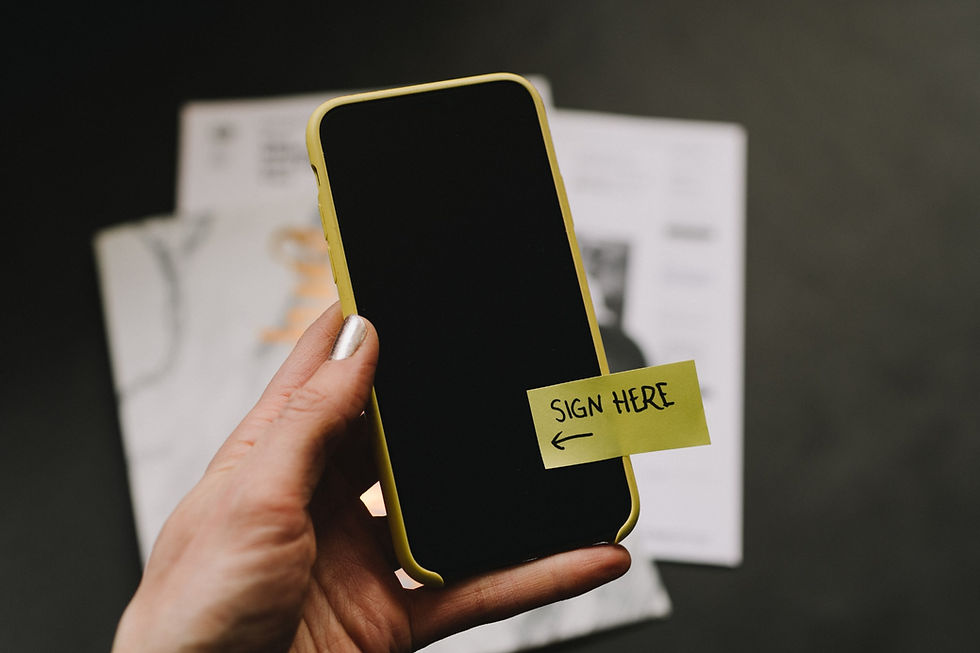The Inherent Bias of OED
- Emil J. Ali

- Mar 18, 2019
- 3 min read
Just like any agency or group operated or managed by individuals, OED is sometimes perceived to be biased. That is not to say that they are in fact biased. Arguably, OED has an incredible team of consummate professionals who aim to protect the public, and practitioners, from unscrupulous conduct. See All About OED. We all have a natural tendency to pick information that conforms to our then existing beliefs and ideas. It is the same reason why humans can look at certain seemingly simple concepts and interpret them in polar opposite ways. For example, on one side, some believe in homeopathic medicine and claim it works marvels. Yet on the other side, naysayers may claim no benefit from such homeopathic therapies.
Jonathan Baron a Professor of Psychology at the University of Pennsylvania describes this thinking as “myside bias.” See Jonathan Baron, Thinking and Deciding (4th ed. 2007) (“People tend to favor possibilities that are already strong, both in search (particularly search for evidence) and in making inferences from evidence at hand.”). Commonly known as confirmation bias, Professor Baron describes that such “irrational persistence of belief is one of the major sources of human folly.” Id. Such bias explains why, in the example above, people with opposing views on a topic can see the exact same evidence and come away feeling validated by their own side. Of course, the concept of groupthink, where excessive concurrence among members of close groups causes the valuation of the groups ideals to be placed above all else, makes such bias worse. See Irving L. Janis, Victims of Groupthink: A Psychological Study of Foreign Policy Decisions and Fiascoes (1972).

In a research study involving criminal investigations, the results indicated that confirmation bias was least evident when investigators had more experience and training. See Wayne A. Wallace, The Effect of Confirmation Bias on Criminal Investigative Decision Making, Walden Dissertations and Doctoral Studies Collection (2015). Moreover, both emotion and evidence presentation order were found to influence the judgment of guilt. Id. Dr. Wallace’s research findings indicate the importance of withholding judgment until all available evidence is analyzed.
With the understanding of myside and confirmation bias, how does a respondent under investigation ensure that OED’s investigation remains unbiased? Absent an absolute guarantee that OED staff attorneys receive regular training, the respondent practitioner, or her counsel, must ensure each are mindful of such human qualities on both sides.
First, presentation of evidence is key. While it is the OED Director’s job, through staff attorneys, to investigate allegations of misconduct, it is fruitful for the respondent practitioner to assist the OED Director by presenting the evidence in a clear and concise manner. So, rather than meet a Request for Information and Evidence with bitter animosity, practitioners are best served by developing a defense strategy that focuses on educating the OED Director as to why the subject allegations are unfounded and incorrect. An effective defense strategy would accomplish that critical goal void of any personal attacks against the grievant or staff attorney. Of course, a good strategy should include reviewing the natural interpretation of the OED Director and his team, based upon the information of record.
Second, a respondent’s effective defense necessarily requires understanding her rights in the subject OED proceeding. As addressed in a previous blog post, it is important to understand the parameters of privilege, confidentiality, work product immunity, and the potential for breach and disclosure of such to unintended recipients such as OED and other agencies. See Upholding your Rights. Analyzing the privilege parameters should also involve consideration of weighing the risks associated with a refusal to fully cooperate. It is important to understand when exceptions may apply, and how they may help your cause.
Finally, a timely response is equally critical. While a formal response must be presented in writing, strategically, a simple telephone call can often help alleviate OED’s concerns. While OED cannot force any practitioner to enter into an on-the-record interview, it is often helpful for OED to become educated about the practitioner’s experience. For example, an informal discussion with an OED staff attorney can often humanize a practitioner and minimize the potential bias. Opening an early and frequent dialog with OED may also guide the staff attorney toward a deeper, and more constructive understanding of the substantive law— particularly given the fact that many staff attorneys within OED lack the benefit of actually practicing patent or trademark law within the private sector. Given the high stakes of potential interviews with OED, prudent practitioners typically consult with counsel with OED expertise before responding to an OED inquiry and/or an OED interview request.
For additional information, please contact McCabe & Ali, LLP at 877-OED-4097.
This post is made available by the lawyer for educational purposes and to provide general information, not to provide specific legal advice. By using this site, you understand that there is no attorney-client relationship between you and the publisher.



@josue.sanchez Thank you for your comment. Understandably, we may not want to do more than "necessary." Nevertheless, it is often helpful to advocate a position to minimize any actual or potential bias (and resulting harm).
Why should an IP attorney have to teach OED how to not be biased?